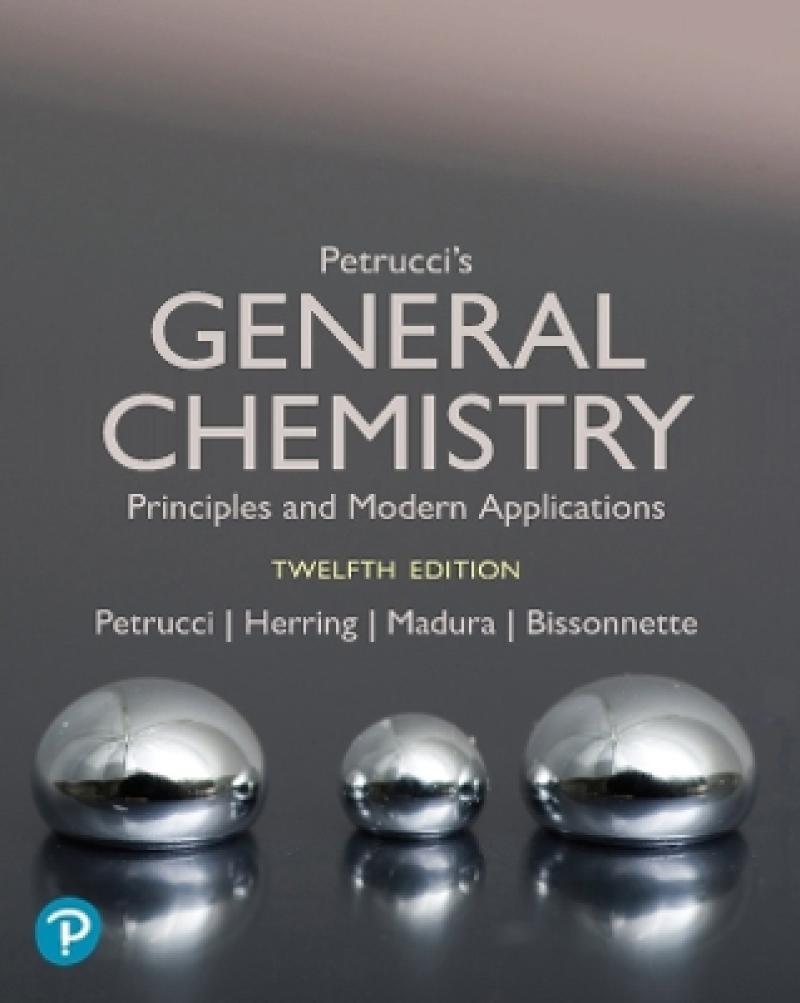Produktdetaljer
Biographical note
Ralph Petrucci received his B.S. in Chemistry from Union College, Schenectady, NY, and his Ph.D. from the University of Wisconsin–Madison. Following ten years of teaching, research, consulting, and directing the NSF Institutes for Secondary School Science Teachers at Case Western Reserve University, Cleveland, OH, Dr. Petrucci joined the planning staff of the new California State University campus at San Bernardino in 1964. There, in addition to his faculty appointment, he served as Chair of the Natural Sciences Division and Dean of Academic Planning. Dr. Petrucci also coauthored General Chemistry with John W. Hill, Terry W. McCreary, and Scott S. Perry.
Geoff Herring received both his B.Sc. and his Ph.D. in Physical Chemistry from the University of London. He was a Professor Emeritus at the Department of Chemistry of the University of British Columbia, Vancouver. Dr. Herring had research interests in biophysical chemistry and published over 100 papers in physical chemistry and chemical physics. He also pursued studies in the use of information technology and interactive engagement methods in teaching general chemistry with a view to improve student comprehension and learning. Dr. Herring taught chemistry from undergraduate to graduate levels for over 30 years and was the recipient of the Killam Prize for Excellence in Teaching twice.
Jeffry D. Madura was a Professor and the Lambert F. Minucci Endowed Chair in Computational Sciences and Engineering at the Department of Chemistry and Biochemistry of Duquesne University located in Pittsburgh, PA. He earned a B.A. from Thiel College in 1980 and a Ph.D. in Physical Chemistry from Purdue University in 1985 under the direction of Professor William L. Jorgensen. The Ph.D. was followed by a postdoctoral fellowship in computational biophysics with Professor J. Andrew McCammon at the University of Houston. Dr. Madura's research interests were in computational chemistry and biophysics. He published more than 100 peer-reviewed papers in physical chemistry and chemical physics. Dr. Madura taught chemistry to undergraduate and graduate students for over 24 years and was the recipient of a Dreyfus Teacher-Scholar Award. He also received the 2014 American Chemical Society Pittsburgh Section Award and the Bayer School of Natural and Environmental Sciences and the Duquesne University Presidential Award for Excellence in Scholarship in 2007. Dr. Madura was an ACS Fellow and a Fellow of the Royal Society of Chemistry. He also worked with high school students and teachers as part of the ACS Science Coaches program.
Carey Bissonnette was Continuing Lecturer at the Department of Chemistry of the University of Waterloo, Ontario. He received his B.Sc. from the University of Waterloo in 1989 and his Ph.D. in 1993 from the University of Cambridge in England. His research interests were in the development of methods for modeling dynamical processes of polyatomic molecules in the gas phase. He won several awards for excellence in teaching, including the University of Waterloo's Distinguished Teacher Award in 2005. Dr. Bissonnette made extensive use of technology in both the classroom and the laboratory to create an interactive environment for his students to learn and explore. For several years, he was actively engaged in undergraduate curriculum development, high-school liaison activities, and the coordination of the university's high-school chemistry contests written each year by students around the world.
